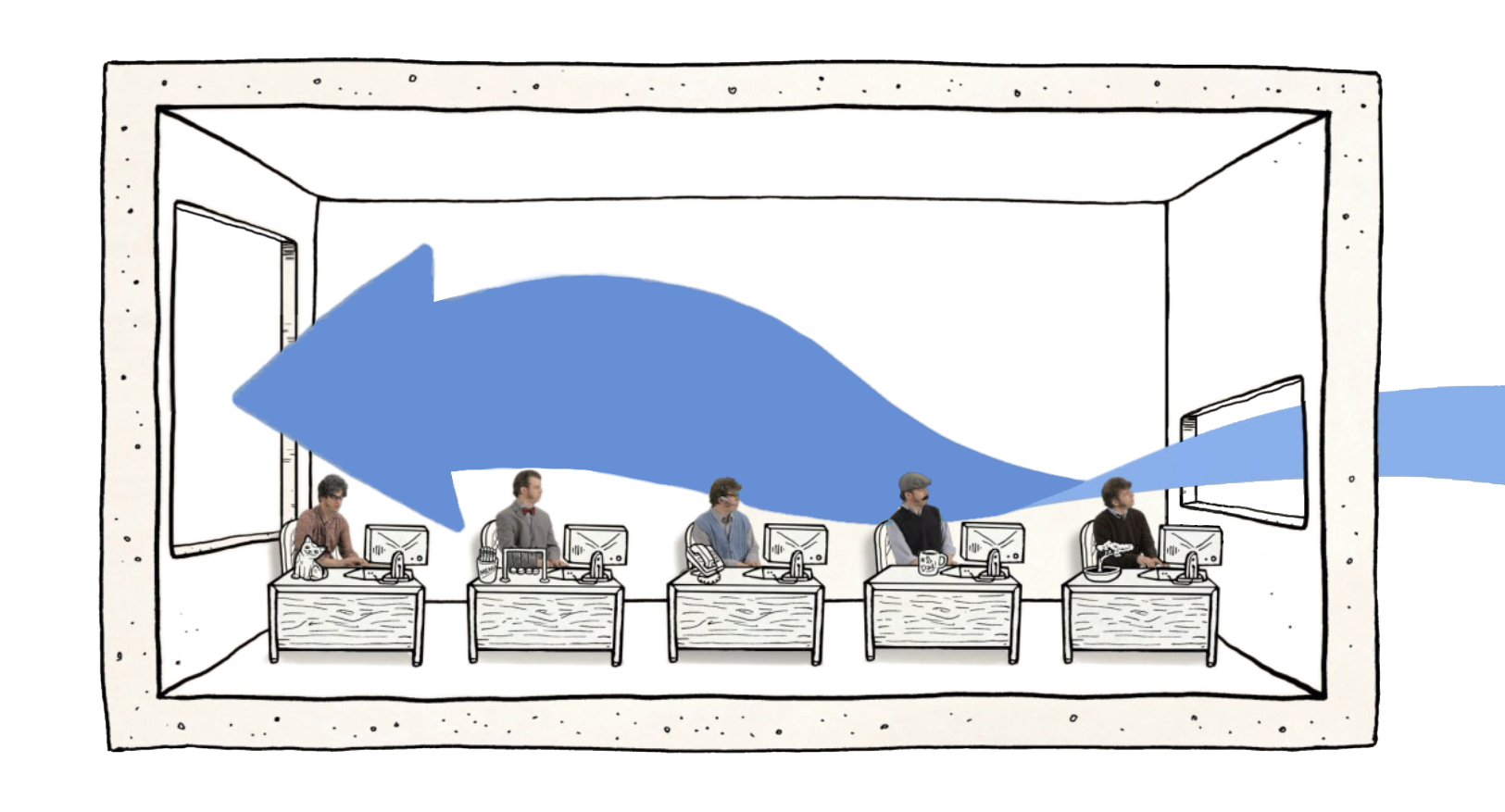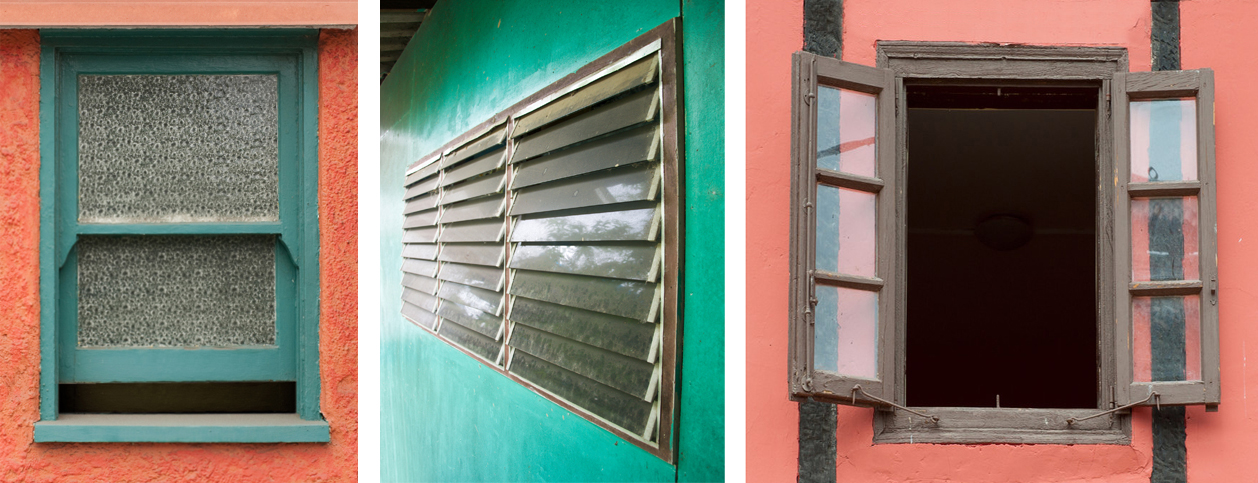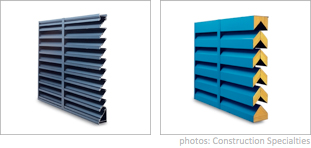You are here
The simple act of opening a window can often provide immediate cooling effects. But how do the size and placement of that window impact the effect you feel? Window design and ventilation louver design greatly affects passive cooling potential, specifically natural ventilation. Be sure to visit the wind, stack, and night-purge ventilation pages to learn more about more specific opening strategies.
Opening Shape
Opening shape matters and can influence airflow effectiveness. Long horizontal strip windows can ventilate a space more evenly. Tall windows with openings at top and bottom can use convection as well as outside breezes to pull hot air out the top of the room while supplying cool air at the bottom.
Opening Size
Window or louver size can affect both the amount of air and its speed. For an adequate amount of air, one rule of thumb states that the area of operable windows or louvers should be 20% or more of the floor area, with the area of inlet openings roughly matching the area of outlets.
However, to increase cooling effectiveness, a smaller inlet can be paired with a larger outlet opening. With this configuration, inlet air can have a higher velocity. Because the same amount of air must pass through both the bigger and smaller openings in the same period of time, it must pass through the smaller opening more quickly1.
 |
Pairing a large outlet with a small inlet increases incoming wind speed. |
Note that a small air inlet and large outlet does not increase the amount of fresh air per minute any more than large openings on both sides would; it only increases the incoming air velocity. Basic physics says that air cannot be created or destroyed as it moves through the building, so in order for the same amount of air to pass through a smaller opening, it must be moving faster.
Air flows from areas of high pressure to low pressure. Air can be steered by producing localized areas of high or low pressure. Anything that changes the air's path will impede its flow, causing slightly higher air pressure on the windward side of the building and a negative pressure on the leeward side. To equalize this pressure, outside air will enter any windward openings and be drawn out of leeward openings.
Because of pressure differences at different altitudes, this impedance to airflow is significantly higher if the air is forced to move upward or downward to navigate a barrier without any corresponding increase or decrease in temperature.
Opening Types
Windows that only open halfway, such as double-hung and sliding windows, are only half as effective for ventilation as they are for daylight. Some casement windows and Jalousie windows, however, can open so wide that effectively their entire area is useful for ventilation.
Casement windows can deflect breezes, or can act as a scoop to bring them in, depending on wind direction. Jalousie windows (horizontal louvered glazing) can catch breezes while keeping out rain.
 |
|
Some window types: double-hung, jalousie, and casement |
You can also use ventilation louvers instead of windows for your openings. Their coefficients of effectiveness will be the same as windows of the same geometry, such as Jalousie windows. Ventilation louvers often open so wide that nearly all their area is useful for ventilation. They are typically oriented horizontally to prevent rain from entering; this is an advantage over most windows. Ventilation louvers also provide visual privacy, and can even provide acoustic damping.
 |
|
Mechanized and acoustically-damping ventilation louvers |
1. See the physics of the Venturi effect.
